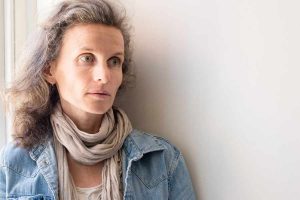More than ever before, women and men are delaying childbearing. Postponing pregnancy has become increasingly common, as women and couples spend time ensuring career success, achieving financial stability and finding suitable partners before trying to have children. The question of how long one can safely wait before having children is at the forefront of many people’s minds. There is anxiety about “how long is too long” to wait to have children before we need to worry about age-related fertility decline as well as potential health risks for our future children and for us.
In 2014, Eijkemans MJ published a paper “Too old to have children? Lessons from natural fertility populations.” addressing this topic.
Summary of Research Findings
Methodology
The study examined multiple large data sets containing records of nearly 60,000 women (58,051 eligible women) and their age at last birth (ALB). Researchers reviewed high-quality data of natural fertility populations using a retrospective cohort design. The relatively recent wide adoption of electronic records made it possible to conduct this study with a much larger data set representing wider geographies than previous research on this topic. The study population included women from a variety of western geographies and from a broad historical time period (the oldest data was from 200 years ago!).
Results
Data analysis showed the median age at last birth was consistently around 40-41 years across all geographies and time periods included in the study. This finding suggests this is a biologically-determined age at which women’s fertility declines. To break this down further, the researchers constructed a biological age at last birth curve which documented a likelihood of “involuntary childlessness” of 12% at age 35, 20% at age 38, 50% at age 41, and nearly 90% at age 45. By age 50, the likelihood of involuntary childlessness approached 100%.

(A) Cumulative age at last birth (ALB) curves for the oldest birth quartile of the five selected populations. Kaplan–Meier curves using left censoring at age at marriage. (B) Smoothed hazard curves for ALB, for the oldest birth quartile of the five selected populations. (C) The biological ALB curve based on the minimal hazard at each age for the oldest birth quartile of the five selected populations.
Source: https://www.ncbi.nlm.nih.gov/pmc/articles/PMC4389129/figure/DEU056F2/?report=objectonly
Discussion
The median age of last birth identified by the study, 40-41 years of age, is notably higher than 35 which, according to the article, is the age around which there is “unsubstantiated pessimism regarding the possibility of natural conception.”
It is also noteworthy that this study included only natural fertility populations, meaning the individuals included in the study made no conscious effort to limit, regulate, or control their fertility. Further investigation is needed to better understand the effects of modern birth control methods on fertility.
The study concludes with the following advice to women thinking about having children:
“the curve contradicts the occasionally exaggerated pessimism about women who intend (or by circumstances are forced) to have children in their late thirties (Twenge, 2013). For them, the lesson is: you still have a good chance to succeed if you don’t wait any longer. For women in their early forties, the lesson is: just try, your chances are still far from hopeless.”
Does a woman’s fertility drop off a cliff at 35 as they say?
The success rates in IVF differ greatly between your early 30s and your late 30s. The IVF response and odds of success drop off a cliff at 35. However, natural fertility declines gradually. The age disparity is less with natural conception.
While it’s harder for older women to get pregnant, and the chance of a chromosomally abnormal child increases, these problems do not increase as sharply as we fear – except perhaps for those trying IVF or artificial insemination.
References
Twenge, Jean M. “How Long Can You Wait to Have a Baby?” The Atlantic, July 2013.





